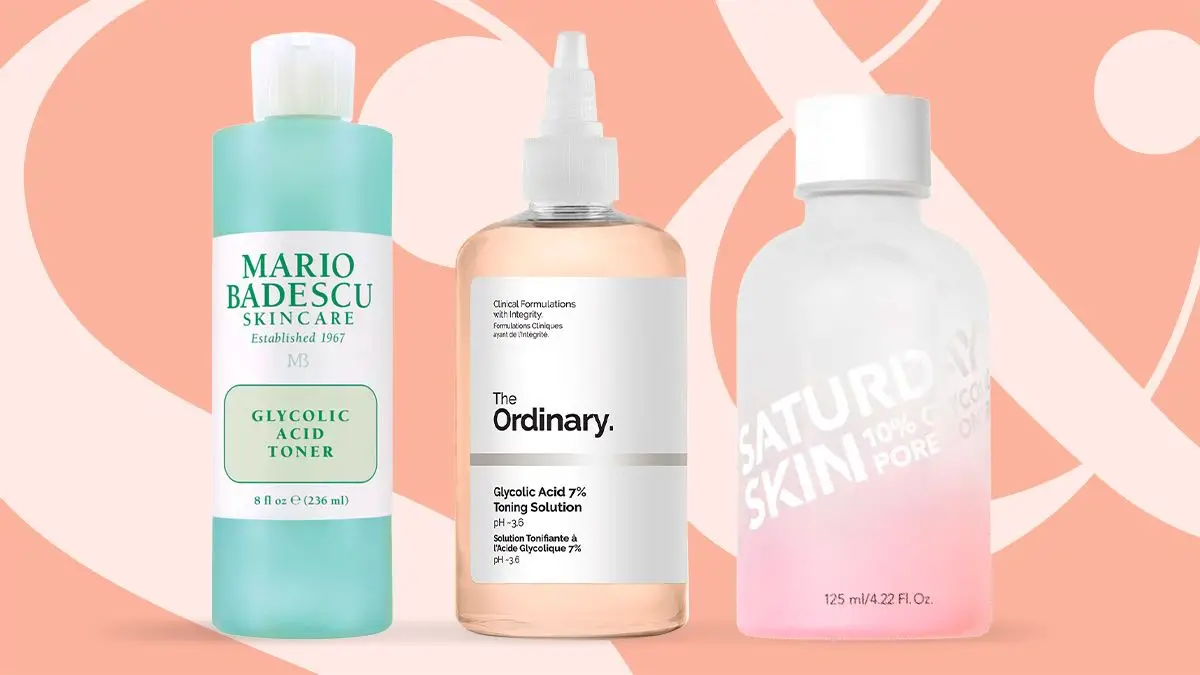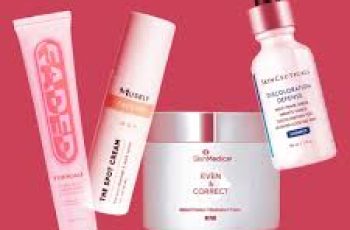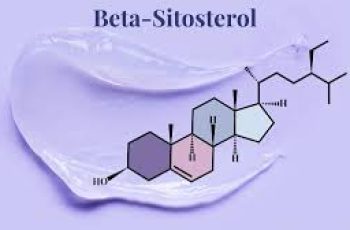
Glycolic acid and lactic acid are both part of the alpha hydroxy acid (AHA) family, known for their ability to exfoliate the skin gently yet effectively.
These acids work on the surface of the skin to remove the build-up of dead skin cells, dirt, and impurities.
By eliminating this layer of debris, they reveal a brighter, smoother, and healthier-looking complexion underneath.
Fine lines, rough texture, and dull skin all begin to improve as these acids help skin regenerate faster.
This process is known as chemical exfoliation, and it’s a key step in maintaining radiant and even-toned skin.
Both glycolic acid and lactic acid help increase cellular turnover, boost skin clarity, and prepare the skin to absorb other skincare products more efficiently.
Without that layer of dead cells, your serums and moisturizers can penetrate better and deliver results faster.
Although they belong to the same acid family, glycolic acid and lactic acid are different in several key ways.
Glycolic acid is known as the more potent of the two due to its smaller molecular structure. Because of its size, it can penetrate deeper into the skin and reach the lower levels of the epidermis.
This makes it an excellent choice for people with oily or combination skin types, especially those concerned with texture, fine lines, or congestion.
However, this potency comes with a higher chance of irritation, especially for beginners or those with sensitive skin.
Lactic acid, on the other hand, is gentler and more hydrating. It has a larger molecular size, so it works primarily on the skin’s surface.
It’s less likely to cause irritation but still provides impressive exfoliating results.
Lactic acid is especially beneficial for people with dry or sensitive skin because it not only removes dead skin cells but also helps the skin retain moisture.
This is due to its humectant properties, meaning it draws water into the skin and helps it stay hydrated.
It’s a rare combination—an exfoliant that also moisturizes—and this makes lactic acid a great entry-level option.
Now let’s answer the big question—can you use glycolic acid and lactic acid together? The short answer is yes, but with caution.
Both acids serve similar purposes, and when used together improperly, they can lead to over-exfoliation.
This can result in redness, dryness, flaking, or even breakouts if your skin barrier becomes compromised.
If you’re new to acids or have sensitive skin, it’s best to start slowly and introduce one acid at a time. Build your skin’s tolerance gradually and monitor how it reacts.
One option is to alternate their use. You could apply lactic acid in the morning and glycolic acid at night—but only if your skin can tolerate this routine without becoming irritated.
A better approach for many people is to use lactic acid in the morning, when a gentler exfoliant is ideal, and glycolic acid in the evening, when skin repair processes are more active.
This method helps avoid overwhelming your skin while still getting the benefits of both acids.
Always follow acid use with sunscreen of SPF 30 or higher during the day, as AHAs make your skin more sensitive to UV damage—even on cloudy days.
Another option is to alternate days entirely. Use lactic acid on one night and glycolic acid on the next, giving your skin time to rest and recover in between.
This method minimizes the risk of over-exfoliating while still enhancing your routine. Be aware that the strength of each acid product also matters.
Cleansers and toners usually contain lower concentrations of active ingredients, while serums and treatments tend to be more potent.
Start with lower concentrations first to gauge how your skin responds.
If you’re just beginning to experiment with acids, start with lactic acid. It’s the gentlest option and helps improve skin texture while increasing hydration.
Once your skin adapts, you can try glycolic acid in a higher concentration. This ensures your skin remains healthy, smooth, and irritation-free.
No matter which acid you begin with, always do a 24-hour patch test before applying a new product to your full face.
This helps you identify any allergic reaction or sensitivity in a controlled way. If you’re ever uncertain, it’s best to consult a dermatologist for advice tailored to your skin type.
Wondering whether lactic acid is a good exfoliator? Absolutely. Despite being gentler than glycolic acid, lactic acid is still highly effective.
It’s often found in toners and cleansers where it can exfoliate without remaining on the skin for long periods. This reduces the chance of irritation while still offering results.
Lactic acid is ideal for daily use in low concentrations and is perfect for keeping your complexion smooth and bright.
Its humectant properties also provide added hydration, which is something most exfoliating acids can’t offer.
If you have very oily or acne-prone skin, however, lactic acid may not go deep enough to unclog pores effectively. In such cases, you might consider combining AHAs with a BHA like salicylic acid.
This helps clean inside the pores while lactic acid improves surface texture. As for glycolic acid, can you use it right after exfoliating? The answer is no.
Applying glycolic acid immediately after using a physical scrub or exfoliator can be too harsh.
Your skin is already in a vulnerable state after manual exfoliation, and adding a chemical exfoliant can cause serious irritation.
Even though glycolic acid may seem gentler because of its silky feel, it actually penetrates deeper into the skin layers than a scrub.
When combined with physical exfoliation, it can lead to overstimulation. Symptoms of this include redness, flaking, dryness, and even temporary burning sensations.
Additionally, over-exfoliation can strip away natural oils—called sebum—leaving your skin feeling dry and compromised.
It’s best to space out exfoliating treatments to allow your skin to recover and function properly.
Does lactic acid stimulate collagen production? Yes, it does. Regular use of lactic acid has been shown to improve the appearance of fine lines and wrinkles while encouraging new collagen formation.
After consistent use for about four weeks, you may notice that your skin looks firmer and more elastic. Lactic acid also improves skin tone and reduces signs of hyperpigmentation and dark spots.
All of this is achieved with minimal disruption to your skin’s natural protective barrier, making it a safe and effective anti-aging option.
Now what about glycolic acid? Does it lighten the skin? Glycolic acid doesn’t bleach or lighten skin, but it helps even out your skin tone.
It works by exfoliating the surface layer where dead skin cells and pigmentation build up. This helps reduce the appearance of dark spots, sun damage, and dullness over time.
By removing this layer, your complexion looks brighter and more refined.
Glycolic acid can give the illusion of lighter skin not because it changes your natural tone, but because it reveals the fresher, healthier skin beneath.
Can lactic acid shrink pores? It won’t physically shrink pores, since their size is determined by genetics. However, it can help minimize their appearance.
By exfoliating the surface and keeping pores clear of debris, lactic acid prevents clogging and reduces the look of enlarged pores. When pores are clean, they look tighter and less noticeable.
Regular use of lactic acid can therefore lead to smoother texture and improved overall clarity.
So, to summarize—can you use glycolic acid and lactic acid together? Yes, but with care. Don’t layer them in the same routine unless you’re an experienced user and know your skin can handle it.
Instead, alternate their use by applying them at different times of day or on different days entirely. Always listen to your skin, and don’t ignore signs of over-exfoliation.
Make sure to wear SPF daily to protect your freshly exfoliated skin from sun damage.
If you have additional questions or want to explore new product launches, tips, and updates, come follow us on Instagram @procoal. We’re here to help you build your best skincare routine!


